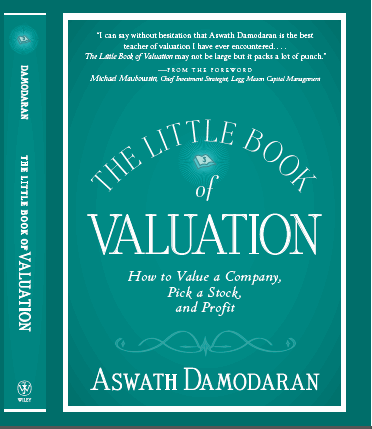 The
Little Book of Valuation
The
Little Book of Valuation
What is a comparable firm?
A
comparable firm is one with cash flows, growth potential, and risk similar to
the firm being valued. It would be ideal if we could value a firm by looking at
how an exactly identical firm - in terms of risk, growth and cash flows - is
priced. Nowhere in this definition is there a component that relates to the
industry or sector to which a firm belongs. Thus, a telecommunications firm can
be compared to a software firm, if the two are identical in terms of cash
flows, growth and risk. In most analyses, however, analysts define comparable
firms to be other firms in the firmÕs business or businesses. If there are
enough firms in the industry to allow for it, this list is pruned further using
other criteria; for instance, only firms of similar size may be considered. The
implicit assumption being made here is that firms in the same sector have
similar risk, growth, and cash flow profiles and therefore can be compared with
much more legitimacy.
This
approach becomes more difficult to apply when there are relatively few firms in
a sector. In most markets outside the United States, the number of publicly
traded firms in a particular sector, especially if it is defined narrowly, is
small. It is also difficult to define firms in the same sector as comparable
firms if differences in risk, growth and cash flow profiles across firms within
a sector are large. Thus, there are hundreds of computer software companies
listed in the United States, but the differences across these firms are also
large. The tradeoff is therefore a simple one. Defining an industry more
broadly increases the number of comparable firms, but it also results in a more
diverse group of companies.
There
are alternatives to the conventional practice of defining comparable firms. One
is to look for firms that are similar in terms of valuation fundamentals. For
instance, to estimate the value of a firm with a beta of 1.2, an expected
growth rate in earnings per share of 20% and a return on equity of 40%[1], we would find other firms across the
entire market with similar characteristics.[2]
The other is consider all firms in the market as comparable firms and to
control for differences on the fundamentals across these firms, using
statistical techniques.